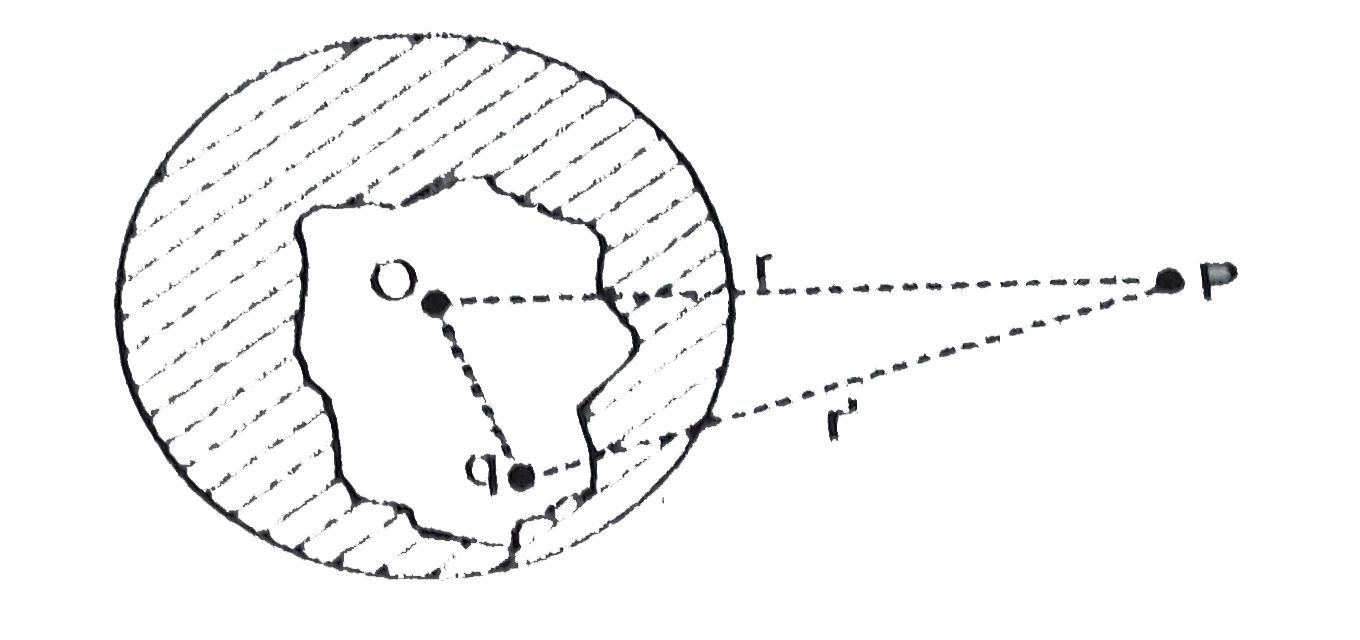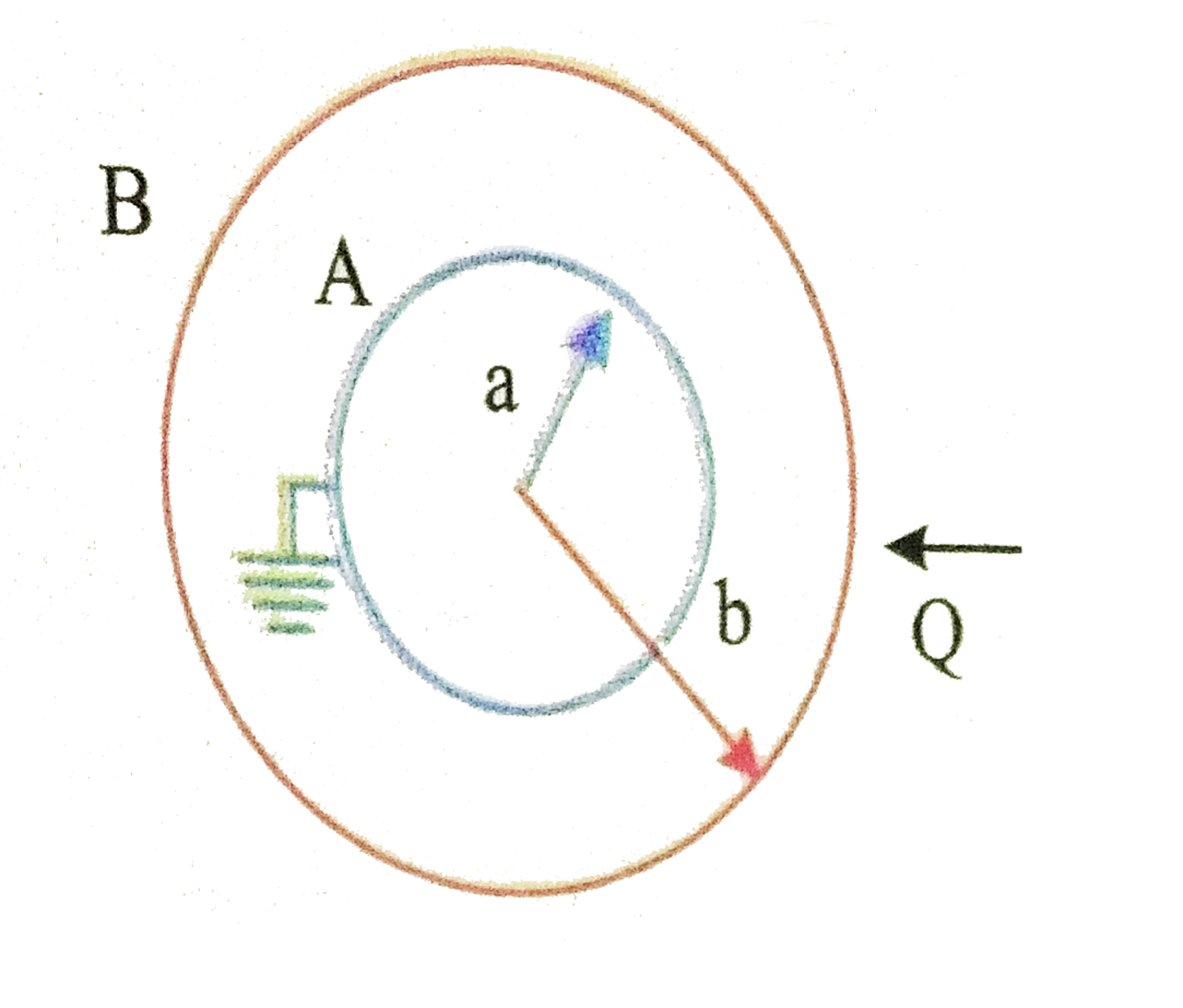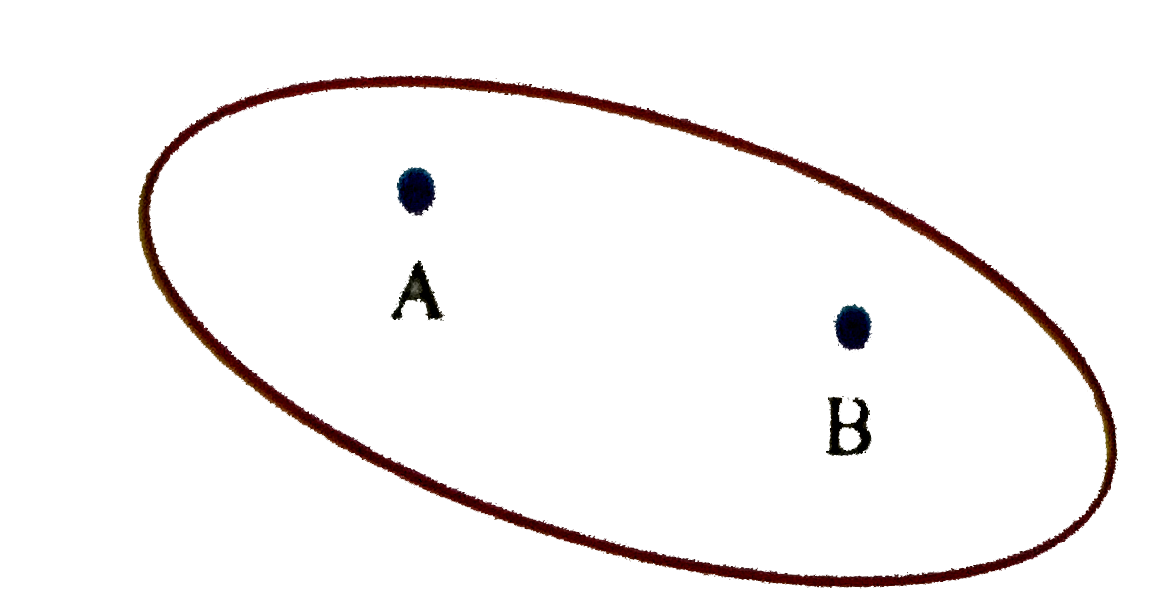Assertion:- Any arbitrary displacement of charges inside a shell does not introduce any change in the electrostatic field of the outer space.
Reason:- A closed conducting shell divides the entire space into the inner and outer parts which are completely independent of one another in respect of electric fields.
If both Assertion & Reason are True & the Reason is a correct explanation of the Assertion.
If both Assertion & Reason are True but Reason is not a correct explanation of the Assertion.
If Assertion is True but the Reason is False.
If both Assertion & Reason are False.
The correct Answer is:A
Solution:
1. Understanding the Assertion: The assertion states that any arbitrary displacement of charges inside a conducting shell does not change the electrostatic field in the outer space. This is based on the principle of electrostatic shielding.
2. Electrostatic Shielding: When charges are placed inside a closed conducting shell, the shell redistributes its surface charges in response to the internal charges. This redistribution ensures that the electric field inside the conducting material of the shell is zero, and consequently, the electric field outside the shell remains unaffected by the internal charges.
3. Gauss's Law Application: According to Gauss's Law, the electric field outside a closed conductor depends only on the total charge enclosed within that conductor. If the charges inside the shell are displaced, the surface charges on the shell will rearrange themselves, but the total charge enclosed remains the same. Therefore, the electric field outside the shell remains unchanged.
4. Understanding the Reason: The reason states that a closed conducting shell divides the space into inner and outer parts that are independent of each other concerning electric fields. This is true because the electric field inside the conductor is zero, and any external electric field does not penetrate the conductor.
5. Conclusion: Both the assertion and the reason are true. The reason correctly explains the assertion, as the independence of the inner and outer electric fields is a direct consequence of electrostatic shielding.
Final Answer: Both the assertion and the reason are true, and the reason is the correct explanation for the assertion.
---
Topper's Solved these Questions
- TEST PAPERSBOOK - ALLENCHAPTER - TEST PAPERSEXERCISE - Part-1 Physics
15 Videos
- TEST PAPERSBOOK - ALLENCHAPTER - TEST PAPERSEXERCISE - part-2 physics
71 Videos
- TEST PAPERSBOOK - ALLENCHAPTER - TEST PAPERSEXERCISE - PAPER 2
60 Videos
- TEST PAPER 4BOOK - ALLENCHAPTER - TEST PAPER 4EXERCISE - PHYSICS
44 Videos
- UNIT & DIMENSIONS, BASIC MATHS AND VECTOR BOOK - ALLENCHAPTER - UNIT & DIMENSIONS, BASIC MATHS AND VECTOR EXERCISE - Exercise (J-A)
7 Videos
Similar Questions
A point charge 'q' is within an electrically neutral conducting shell whose outer surface is a sphere of radius R. The centre of outer surface is at O. Consider a point P outside the conductor as shown in the figure. The magnitude of electric field at P

View SolutionIn the following question a statement of assertion (A) is followed by a statement of reason (R )
A: the potential difference between two concentric sphereical shells depends only on the charge of inner shell
R : the electric field in the region in between two shells depedns on the charge of inner shell and electric field is the negative of potential gradient.
View Solution
Knowledge Check
Assertion : Displacement current goes through the gap between the plates of a capacitor when the charge of the capacitor does not charge
Reason : The displacement current arises in the region in which the electric field is constant with time.AIf both assertion and reason are true and reason is the correct explanation of assertionBIf both assertion and reason are true but reason is not the correct explanation of assertionCIf assertion is true but reason is falseDIf both assertion and reason are false
If charge q1 and q2 lies inside and outside respectively of a closed surface S. Let E be the electric field at any point on S and ϕ be the electric flux over S. Select the incorrect option.
View SolutionConsider two concentric spherical metal shells of radii 'a' and b>a .The outer shell has charge Q but the inner shell has no charge.Now the inner shell is grounded ,This means that the inner shell will come at zero potential and that electric fields lines leave the outer shell and end on the inner shell.(a) Find the charge on the inner shell
Find the potential on outer sphere.

View SolutionA charge Q is uniformly distributed on a thin spherical shell. What is the field at the centre of the shell? If a point charge is brought close to the shell, will the field at the centre change? Does your answer depend on whether the shell is conducting or nonconducting?
View SolutionTwo concentric spherical conducting shells of radii R and 2R are carrying charges q and 2q, respectively. Both are now connected by a conducting wire. Find the change in electric potential (inV) on the outer shell.
View SolutionA point charge +Q is placed at the centre of an uncharged spherical conducting shell of inner radius a and outer radius b.
i. Find the electric field for r<a.
ii. What is the magnitude and sigh of the induced charge q' on the inner shell surface?
iii. What is the electric field at points r>b?
iv. What id the surface charge on the outer surface of the conductor?
View SolutionConsider two concentric conducting spheres. The outer sphere is hollow and initially has a charge −7Q on it. The inner sphere is solid and has a charge +2Q on it.
a. How much charge is on the outer surface and inner surface of the outer sphere.
b. If a wire is connected between the inner and outer sphere, after electrostatic equilibrium is established how much total charge is on the outer sphere? How much charge is on the outer surface and inner surface of the outer sphere? Does the electric field at the surface of the inside sphere change when the wire is connected?
c. We return to original condition in (a). We now connect the outer sphere to ground with a wire and then disconnect it. How much total charge will be on the outer sphere? How much charge will be on the inner surface and outer surface of the outer sphere?
View SolutionAssertion:A point charge q is placed near an arbitrary shaped solid conductor as shown in figures.The potential difference between the points A and B within the conductor remain same irrespective of the magnitude of charge q
Reason: The electric field inside a solid conductor is zero under electrostatic conditions

View Solution
